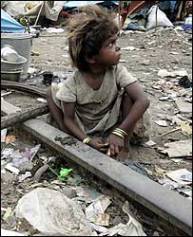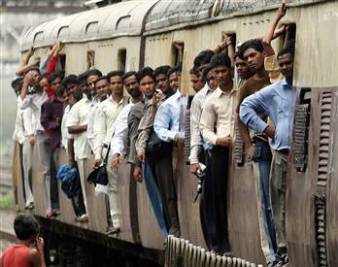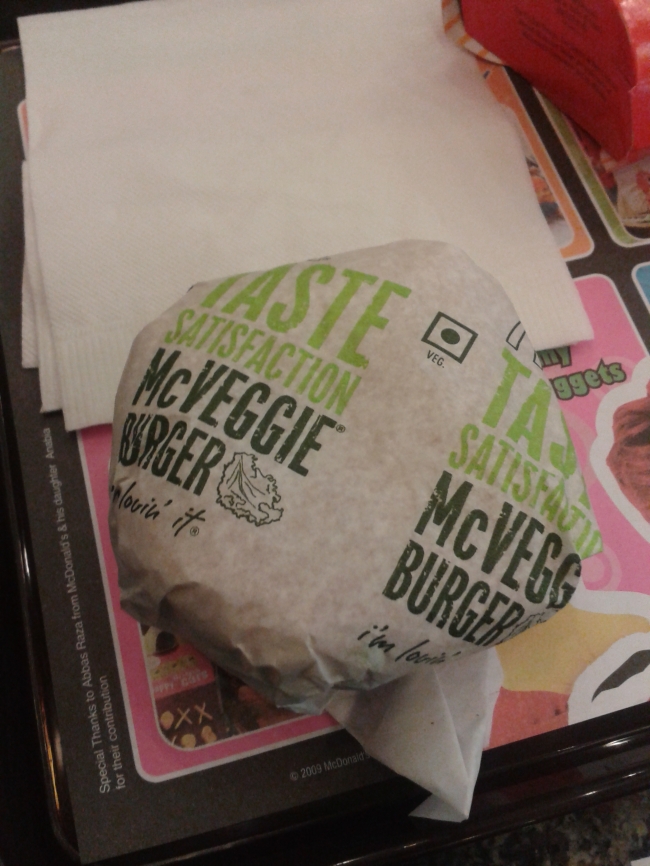Here in Mumbai, poverty is inescapable. Everywhere you turn, you see it. People of all ages constantly begging for money, oftentimes with a limb (or three) missing. Flimsy shanty homes crammed together seemingly on every other corner, as if collapsable from a hard shove. Kids out on the street, using buckets of dirty water to wash themselves. None of this is entirely new to me, but I’ve never been to a place that displayed such things so…intensely.
Seeing this everyday has really made me wonder: how much of our fate is truly in our own hands? Consequently, how much of our fate is already pre-determined by the time we are born?
In America, the most individualistic society in the world, we are taught to believe that we are in control of our own destiny. That our actions determine our results. That anything is possible, no matter the humbleness of our beginnings. These fundamental beliefs are the essence of the American Dream. But when I see malnourished kids combing the garbage for a few scraps to eat or a boy with both arms missing begging me for a few rupees with a purse draped around his neck, I can’t help but wonder how these beliefs I grew up with are simply inapplicable to so much of the rest of the world. How many great scientists, inventors, doctors, artists, musicians has the world missed out on simply because so many kids never had a chance?
I like to think that the reason I am where I am today is based on my own talent, work ethic and decisions that I made. But really, the biggest difference between me and that malnourished kid in the slum might be that I was born into a middle class family in the US and he was born into a family living in the slums of Mumbai.
In the United Arab Emirates, a boy lucky enough to be born Emerati is essentially guaranteed to be wealthy his entire life. A boy born 150 miles away in an Iranian salt mine is very likely to be doomed to a lifetime of poverty. Who knows, that same Emerati boy may have had a similar fate to the Iranian boy had he been born 100 years earlier, before the oil started flowing. Is the main determinant of our fate how lucky we get in the birth lottery?
Fortunately, I am optimistic that the potential impact of our results in the birth lottery will lessen in the future.
Today, I went on a tour of the Dharavi slum, one of the largest slums in Asia. If you’ve seen the movie Slumdog Millionaire, then you’ll recognize it as the area where Jamal, Malik and Latika grew up. From my conversations with some of the locals here, it seems that the movie had received very mixed reviews here in India, the chief complaint being that Dharavi was shown in an un-flattering, and more importantly, un-realistic way. After having gone on the tour, I can understand why the locals feel that way. Most people (including yours truly) associate the word ‘slum’ with extremely negative connotations. Extreme poverty. Feces. Dirtiness. Smelliness. Just to name a few. Although these things definitely do exist, Dharavi is much more than that.
Dharavi covers an area of 535 acres and is home to over a million people, with a population density roughly 20x that of the rest of the city. Located on prime real estate in the heart of Mumbai, it is not a place where poor people waste away their days doing nothing. Rather, it is one of the most productive places in the city, home to a large number of industries and small businesses, with an annual turnover estimated between $650 million USD (per Wikipedia) and $1 billion USD (per tour guide). Dharavi is home to the largest recycling industry in the city. Roughly 60% of all plastic used in Mumbai comes through its factories, and a portion of the recycled plastic is sold to foreign multinational corporations such as LG. It also houses a large leather good industry, where the raw materials are sold and shipped to foreign luxury goods brands. So next time you purchase an Android smartphone or a Gucci wallet, there’s a good chance some of the materials used originated from this place.
Essentially, Dharavi is a city within a city. There’s a popular saying that once you go into Dharavi, there’s no need to leave, as anything you need is available there. These days there are even kids that grew up in the slum, went to college and obtained a ‘good’ white collar job, that still choose to live there. I am not trying to glorify the place by any means, but it is important to distinguish between the perception of a place based on something like a Hollywood (or British) movie and its reality.
The other thing I noticed when walking through the place was that, even in one of the poorest places in the city, the people there have access to some of the luxuries of modern day technology, such as television, cellphones (my local tour guide had a nicer phone than I did) and, most importantly, wi-fi and the internet.
I believe that if we are going to lessen the impact of our results in the birth lottery on our eventual future, advances in technology, and especially the internet, is our best chance. Our world now is more interconnected than it has ever been. The more places I go, the more I realize that our generation is more or less the same. We are exposed to the same TV shows, the same Youtube videos, the same Lady Gaga songs. The internet has truly flattened the playing field. There is so much free information readily available now on the internet, that even a poor kid born in the slums can take the same courses I do, if he so chooses to.
The goal of development is not to level the playing field so everyone has equal opportunities. Ask the communists, that’s never going to happen. The goal is to give everyone a fighting chance, so that their results in the birth lottery do not entirely determine their eventual fate. We have a long ways to go but I’m hopeful we’ll get there.








